Ilkay Ulusoy
Training and Deploying Spiking NN Applications to the Mixed-Signal Neuromorphic Chip Dynap-SE2 with Rockpool
Mar 14, 2023Abstract:Mixed-signal neuromorphic processors provide extremely low-power operation for edge inference workloads, taking advantage of sparse asynchronous computation within Spiking Neural Networks (SNNs). However, deploying robust applications to these devices is complicated by limited controllability over analog hardware parameters, unintended parameter and dynamics variations of analog circuits due to fabrication non-idealities. Here we demonstrate a novel methodology for offline training and deployment of spiking neural networks (SNNs) to the mixed-signal neuromorphic processor Dynap-SE2. The methodology utilizes an unsupervised weight quantization method to optimize the network's parameters, coupled with adversarial parameter noise injection during training. The optimized network is shown to be robust to the effects of quantization and device mismatch, making the method a promising candidate for real-world applications with hardware constraints. This work extends Rockpool, an open-source deep-learning library for SNNs, with support accurate simulation of mixed-signal SNN dynamics. Our approach simplifies the development and deployment process for the neuromorphic community, making mixed-signal neuromorphic processors more accessible to researchers and developers.
MetaLabelNet: Learning to Generate Soft-Labels from Noisy-Labels
Mar 19, 2021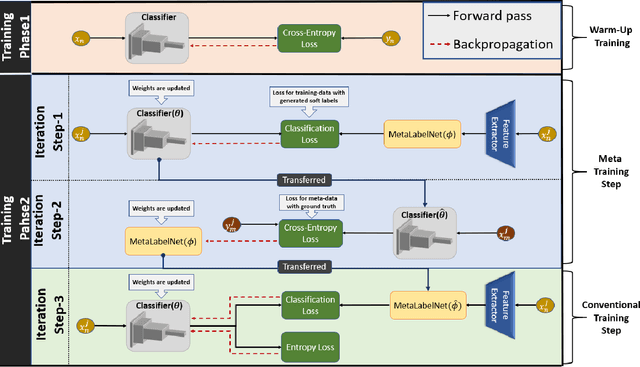
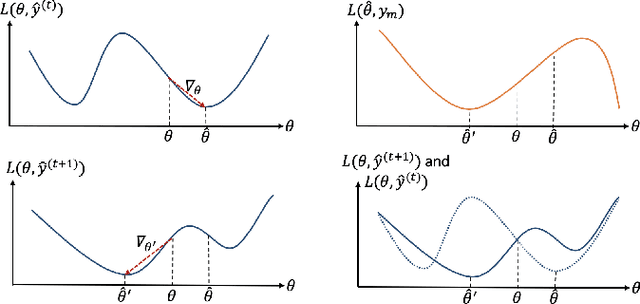
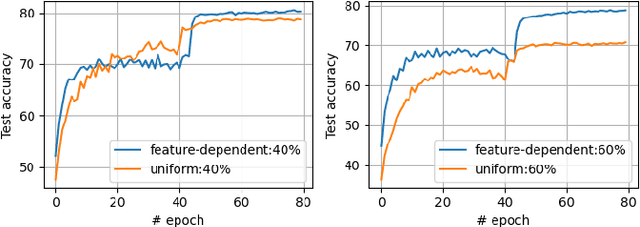
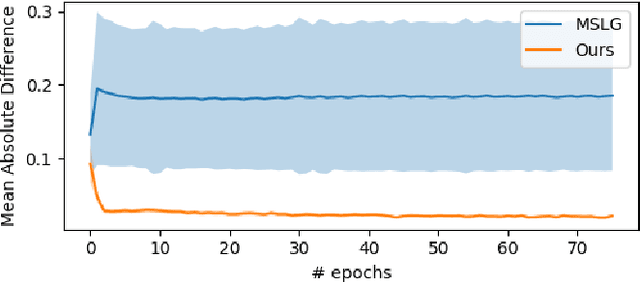
Abstract:Real-world datasets commonly have noisy labels, which negatively affects the performance of deep neural networks (DNNs). In order to address this problem, we propose a label noise robust learning algorithm, in which the base classifier is trained on soft-labels that are produced according to a meta-objective. In each iteration, before conventional training, the meta-objective reshapes the loss function by changing soft-labels, so that resulting gradient updates would lead to model parameters with minimum loss on meta-data. Soft-labels are generated from extracted features of data instances, and the mapping function is learned by a single layer perceptron (SLP) network, which is called MetaLabelNet. Following, base classifier is trained by using these generated soft-labels. These iterations are repeated for each batch of training data. Our algorithm uses a small amount of clean data as meta-data, which can be obtained effortlessly for many cases. We perform extensive experiments on benchmark datasets with both synthetic and real-world noises. Results show that our approach outperforms existing baselines.
Deep Learning from Small Amount of Medical Data with Noisy Labels: A Meta-Learning Approach
Oct 14, 2020

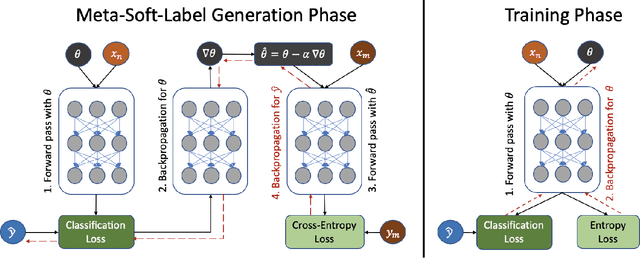
Abstract:Computer vision systems recently made a big leap thanks to deep neural networks. However, these systems require correctly labeled large datasets in order to be trained properly, which is very difficult to obtain for medical applications. Two main reasons for label noise in medical applications are the high complexity of the data and conflicting opinions of experts. Moreover, medical imaging datasets are commonly tiny, which makes each data very important in learning. As a result, if not handled properly, label noise significantly degrades the performance. Therefore, we propose a label-noise-robust learning algorithm that makes use of the meta-learning paradigm. We tested our proposed solution on retinopathy of prematurity (ROP) dataset with a very high label noise of 68%. Our results show that the proposed algorithm significantly improves the classification algorithm's performance in the presence of noisy labels.
Meta Soft Label Generation for Noisy Labels
Jul 11, 2020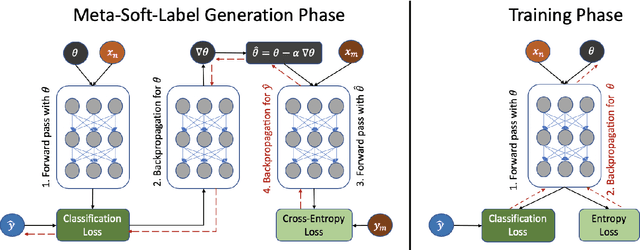
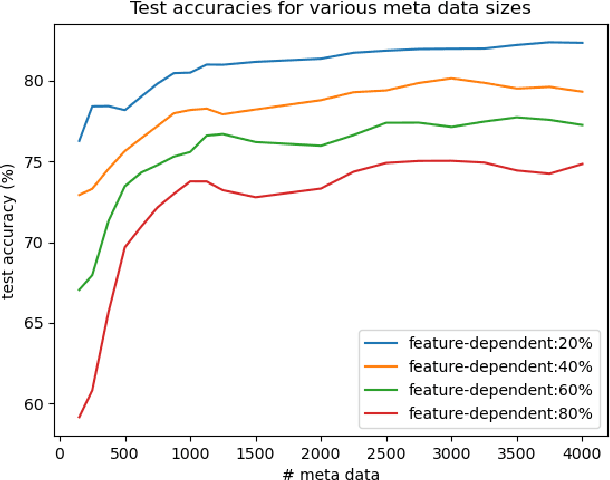


Abstract:The existence of noisy labels in the dataset causes significant performance degradation for deep neural networks (DNNs). To address this problem, we propose a Meta Soft Label Generation algorithm called MSLG, which can jointly generate soft labels using meta-learning techniques and learn DNN parameters in an end-to-end fashion. Our approach adapts the meta-learning paradigm to estimate optimal label distribution by checking gradient directions on both noisy training data and noise-free meta-data. In order to iteratively update soft labels, meta-gradient descent step is performed on estimated labels, which would minimize the loss of noise-free meta samples. In each iteration, the base classifier is trained on estimated meta labels. MSLG is model-agnostic and can be added on top of any existing model at hand with ease. We performed extensive experiments on CIFAR10, Clothing1M and Food101N datasets. Results show that our approach outperforms other state-of-the-art methods by a large margin.
Image Classification with Deep Learning in the Presence of Noisy Labels: A Survey
Dec 11, 2019


Abstract:Image classification systems recently made a big leap with the advancement of deep neural networks. However, these systems require excessive amount of labeled data in order to be trained properly. This is not always feasible due to several factors, such as expensiveness of labeling process or difficulty of correctly classifying data even for the experts. Because of these practical challenges, label noise is a common problem in datasets and numerous methods to train deep networks with label noise are proposed in literature. Deep networks are known to be relatively robust to label noise, however their tendency to overfit data makes them vulnerable to memorizing even total random noise. Therefore, it is crucial to consider the existence of label noise and develop counter algorithms to fade away its negative effects for training deep neural networks efficiently. Even though an extensive survey of machine learning techniques under label noise exists, literature lacks a comprehensive survey of methodologies specifically centered around deep learning in the presence of noisy labels. This paper aims to present these algorithms while categorizing them according to their similarity in proposed methodology.
 Add to Chrome
Add to Chrome Add to Firefox
Add to Firefox Add to Edge
Add to Edge